Nanotechnologies in Construction: A Scientific Internet-Journal @nanobuild-en
Статьи журнала - Nanotechnologies in Construction: A Scientific Internet-Journal
Все статьи: 572
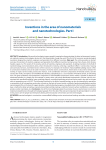
Inventions in the area of nanomaterials and nanotechnologies. Part I
Статья научная
Introduction. Advanced technologies impress people’s imagination demonstrating the latest achievements (materials, methods, systems, technologies, devices etc.) that dramatically change the world. This, first of all, concerns nanotechnological inventions designed by scientists, engineers and specialists from different countries. Main part. The article provides an abstract overview of inventions of scientists, engineers and specialists from different countries: Germany, Iraq, China, Russia, USA, Ukraine, Sweden, Japan et al. The results of the creative activity of scientists, engineers and specialists, including inventions in the field of nanotechnology and nanomaterials allow, when introduced to industry, achieving a significant effect in construction, housing and communal services, and related sectors of the economy. For example, the invention «Nanomodified building mortar» refers to construction materials and can be used in masonry of ceramic stones, ceramic bricks, hollow bricks in dry and hot climate. The novelty, in respect to the existing construction mortars, is the combination of known components of Portland cement, sand for construction works, amorphous nanomodified silica dioxide, superplasticizer С-3, cure retarders of Portland cement, air-entraining resin. The given qualitative and quantitative composition of nanomodified construction mortar makes it possible to obtain the mentioned mixtures in a simple way: for example, in gravity mixer, with evenly distributed components in volume, which is characterized with specified flowability, water-retaining property, controlled hardening period and can be used in dry and hot climate with air temperature up to 40-50°С. The following inventions in the field of nanotechnology can also be interesting for specialists: a composition of self-compacting construction concrete on the basis of cement matrix, a method of producing polarization-sensitive nanocomposite film on the basis of copper selenide, a method of producing porous moulded article in the form of insulation plaster layer, a method to obtain amorphous nanostructured diamond-like coating, a method of cement surface modification, a system to produce carbon nanotubes, et al. Conclusion. One of the most challenging tasks the economy of every country faces is to increase industrial competitiveness through technological upgrade. From the side of the state and companies the principal object to control in this process are the people and enterprises dealing with introduction of inventions and new technologies.
Бесплатно
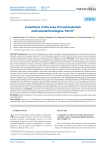
Inventions in the area of nanomaterials and nanotechnologies. Part II
Статья научная
Introduction. Advanced technologies impress people’s imagination demonstrating the latest achievements (materials, methods, systems, technologies, devices etc.) that dramatically change the world. This, first of all, concerns nanotechnological inventions designed by scientists, engineers and specialists from different countries. Main part. The article provides an abstract overview of inventions of scientists, engineers and specialists from different countries: Germany, Russia, USA, et al. The results of the creative activity of scientists, engineers and specialists, including inventions in the field of nanotechnology and nanomaterials allow, when introduced to industry, achieving a significant effect in construction, housing and communal services, and related sectors of the economy. For example, the task resolved by the invention «A composition on the basis of oxide nanostructures to provide surface with superhydrophobic properties», means to design a new method of obtaining materials with superhydrophobic properties which possess improved performance and functional characteristics which can be applied in various areas: power engineering, electronics, machine-building, construction, ship-building, aviation, aerospace and food industries. The feature of the invention is that the surfaces demonstrate superhydrophobic properties and, as a result of that, their applying allows protecting metal structures, such as power lines, frame structures, roofs, from ice formation and dirtying. The technical result is possible due to the use of composition on the basis of oxide nanostructures to provide surface with superhydrophobic properties. The composition contains tetraethoxysilane and tetraisopropyl titanate as structure-forming agents, hexamethyldisilazane as hydrophobic element, isopropyl alcohol as dissolvent, non-spheric nanocrystal titanium dioxide with particle size from 10 to 50 nm as a grow accelerator of anisotropic structures to provide specified roughness of the surface. The specialist can be also interested in the following inventions in the area of nanotechnologies: a composite heat-conducting material on the basis of nanoliquid, a nanocomposite material on the basis of potassium titanate, a method of obtaining of nanodispersed powders, hybrid supercondenser on the basis of nanosized nickel hydroxide, etc. Conclusion. One of the most challenging tasks the economy of every country faces is to increase industrial competitiveness through technological upgrade. From the side of the state and companies the principal object to control in this process are the people and enterprises dealing with introduction of inventions and new technologies.
Бесплатно
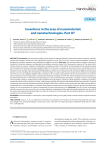
Inventions in the area of nanomaterials and nanotechnologies. Part III
Статья научная
Introduction. Advanced technologies inspire people by demonstrating the latest achievements (materials, methods, systems, technologies, devices etc.) that dramatically change the world. This, first of all, concerns nanotechnological inventions designed by scientists, engineers and specialists from different countries. Main part. The article provides an abstract overview of inventions of scientists, engineers and specialists from different countries: Russia, USA, Turkmenistan, Japan et al. The results of the creative activity of scientists, engineers and specialists, including inventions in the field of nanotechnology and nanomaterials allow, when introduced to industry, achieving a significant effect in construction, housing and communal services, and related sectors of the economy. For example, the invention «Modifying additive» is related to the road construction and can be applied in production of asphalt-concrete, including that with utilizing of nanotechnologies. To improve performance characteristics of bitumen and asphalt concrete one can use modifying additive which comprises a mix of carbon nanomaterials. The aim of the invention is to solve the task of creating new technology which could provide obtaining of asphalt concrete with enhanced performance characteristics. The following inventions in the field of nanotechnology can also be interesting for specialists: a method to obtain multi-layered nanocomposite coating; a method of laser surface treatment for steel products; a device to obtain graphene-containing suspension; a method to obtain nanocrystal silicon powder; a self-cleaning material with chemical and biological protection properties; a method of obtaining nanostructured composite material on the basis of aluminum; a device control system with the shape memory effect to manipulate micro- and nanoobjects; a method to form plasmon nanostructures on the object surfaces to provide non-destructive analysis of low concentrations of chemical compounds by Raman spectroscopy et al. Conclusion. One of the most challenging tasks the economy of every country face is to increase industrial competitiveness through technological upgrade. From the side of the state and companies the principal object to control in this process are the people and enterprises dealing with introduction of inventions and new technologies.
Бесплатно
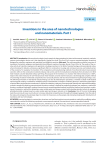
Inventions in the area of nanotechnologies and nanomaterials. Part I
Статья научная
Introduction. Advanced technologies inspire people by demonstrating the latest achievements (materials, methods, systems, technologies, devices etc.) that dramatically change the world. This, first of all, concerns nanotechnological inventions designed by scientists, engineers and specialists from different countries. Main part. The article provides an abstract overview of inventions of scientists, engineers and specialists from different countries: Germany, Russia, China, USA et al. The results of the creative activity of scientists, engineers and specialists, including inventions in the field of nanotechnology and nanomaterials allow, when introduced to industry, achieving a significant effect in construction, housing and communal services, and related sectors of the economy. For example, the invention «The composition and manufacturing method of non-fired zirconium heat-resistant concrete» refers to the construction materials industry and can be used in the manufacture of products from zirconium non-fired heat-resistant concrete obtained without pre-firing. The purpose of the invention is to increase the thermal resistance at 1300оC, improve the water resistance of non-fired zirconium heat-resistant concrete and the exclusion a technologically complex method of converting the above-mentioned components into nanoscale particles and heat-shock treatment requiring high energy costs. The following inventions in the field of nanotechnology can also be interesting for specialists: a method to obtain multi-layered nanocomposite coating: a method for modifying carbon nanomaterials in nitrogen-containing plasma; a method for regeneration of aerosol filters and protective membranes; a method for obtaining a polymer nanocomposite material with reduced flammability; a robotic complex for obtaining nanostructured chromium coatings; a method for producing hydrogen from methane, a method for forming a combined hydrophilic coating; thermochromic nanoencapsulated material, production method and a product containing such material; a method for obtaining a water-soluble paint-and-lacquer material with photobactericidal activity for applying photobactericidal coatings based on water-soluble paint-and-lacquer materials еt al. Conclusion. One of the most challenging tasks the economy of every country face is to increase industrial competitiveness through technological upgrade. From the side of the state and companies the principal object to control in this process are the people and enterprises dealing with introduction of inventions and new technologies.
Бесплатно
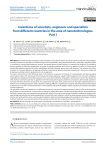
Статья научная
The article provides an abstract review of patents. The results of creative activity of scientists, engineers and specialists, including inventions in the field of nanotechnology and nanomaterials, being implemented, allow achieving a significant effect in construction, housing and community services, and related sectors of the economy. For example, the invention «A method to produce graphene-containing suspensions by means of graphite exfoliation and a device to perform it» refers to chemical and construction industries and can be used in modification of plastic lubricant, epoxy resins and concretes. The technical task of the invention is to increase efficiency of graphite exfoliation, to produce graphene-containing suspensions in continuous mode and to decrease unit labor costs for production of such suspensions. The task is achieved due to the following steps of the method: preparation of mixture of crystal graphite and liquid, graphite concentration is from 10 to 20 mass percent in container for initial suspension, supply of initial suspension into rotor plant, exfoliation of graphite and withdrawal of treated suspension from rotor plant, exfoliation of graphite is performed in several rotor plants one after another, and initial suspension is supplied into the first rotor plant by pump with fixed consumption, after treated suspension has been withdrawn from one of rotor plant, it is supplied into next rotor plant, and from the last rotor plant treated suspension is delivered into centrifugal separator, after separation centrifuge effluent is supplied into container of finish product and precipitate is delivered to a container of initial suspension in which graphite and liquid are added to obtain specified concentration of graphite in initial suspension. The specialists can also be interested in the following inventions in the area of nanotechnologies: Evolution of PV technology from conventional to nano-materials; a composition of coating for colored decoration of building walls; ferroelectric nanocomposite on the basis of porous glass and monopotassium phosphate materials; innovative technology of municipal wastewater treatment for rapid sludge sedimentation and enhancing pollutants removal with nano-material, a method to obtain powder mixture of bidispersed ceramic and metal particles, micro- and nano-plastic pollution: behavior, microbial ecology, and remediation technologies; a method to obtain multilayer wear-resistant diamond like coatings; fuel element with composite protective coating et al.
Бесплатно

Статья научная
The article provides an abstract review of patents. The results of creative activity of scientists, engineers and specialists, including inventions in the field of nanotechnology and nanomaterials, being implemented, allow achieving a significant effect in construction, housing and community services, and related sectors of the economy. For example, the invention «Method for liquidphase synthesis of nanostructured ceramic material in the CeO2–Sm2O3 system to create a solid oxide fuel cell» can contribute to the active development of alternative, hydrogen energy. Fuel cells have a wide range of applications – from batteries in portable electronic devices to large-scale power generation and autonomous use (for example, in remote areas). Power plants based on fuel cells are almost twice as economical as traditional ones. Their efficiency can reach 85%, and the amount of harmful emissions is almost 100 times lower due to the lack of direct chemical contact of the fuel with the oxidizer. The specialists can also be interested in the following inventions in the area of nanotechnologies: method of increasing the tensile strength of fiber composites by means of preliminary modification of carbon fibers with carbon nanotubes and molecules containing amino groups; preparation method of pure silver nanowires; towards safe and sustainable innovation in nanotechnology; method of distribution of carbon-based nanoparticles in the production of nanocomposite unidirectional thermoplastic tapes; device for reducing the impact of vibration and shock effects on the performance of technological equipment; high-density three-dimensional electrically conductive micro- and mesoporous material based on carbon nanotubes and / or low-layer graphenes and a method for its preparation; nanotechnology as a viable alternative for the removal of antimicrobial resistance determinants from discharged municipal effluents and associated watersheds; and others.
Бесплатно

Статья научная
Introduction. Advanced technologies impress people’s imagination demonstrating the latest achievements (materials, methods, systems, technologies, devices etc.) that dramatically change the world. This, first of all, concerns nanotechnological inventions designed by scientists, engineers and specialists from different countries. Main part. The article provides an abstract review of patents. The results of creative activity of scientists, engineers and specialists, including inventions in the field of nanotechnology and nanomaterials, being implemented, allow achieving a significant effect in construction, housing and community services, and related sectors of the economy. For example, the invention «Composite material with oriented carbon nanotubes» refers to the area of composite materials which consist of polymer matrix and filler that is often presented by carbon nanotubes. The technical result is increased tensile strength of composite material due to formation of structure of oriented carbon nanotubes in polymer matrix. That is performed by means of flat-rate flow of direct current which destroys filler agglomerates. The specialists can also be interested in the following inventions in the area of nanotechnologies: a method to produce powder containing nanocrystalline cubic tungsten carbide; a method to produce porous graphene membranes and the membranes produced with this method; suppressor coating on the basis of polymer matrix with inclusion of carbon nanotubes and a method to produce it; a method to determine location of polyethylene gas pipeline and places of possible illegal tapping of those pipeline; a method to produce biphasic thermoelectric ceramics; electron-beam system of 3D radiant nanomodification for materials and articles; lab-on-fruit skin and lab-on-leaf towards recognition of trifluralin using Ag-citrate/GQDs nanocomposite stabilized on the flexible substrate: A new platform for the electroanalysis of herbicides using direct writing of nano-inks and pen-on paper technology; and others. Conclusion. One of the most challenging tasks the economy of every country face is to increase industrial competitiveness through technological upgrade. From the side of the state and companies the principal object to control in this process are the people and enterprises dealing with introduction of inventions and new technologies.
Бесплатно

Статья научная
Introduction. Advanced technologies impress people’s imagination demonstrating the latest achievements (materials, methods, systems, technologies, devices etc.) that dramatically change the world. This, first of all, concerns nanotechnological inventions designed by scientists, engineers and specialists from different countries. Main part. The paper briefly reviews inventions made by scientists, engineers and specialists from different countries: Russia, USA, China, Belarus, Great Britain, Vietnam, Denmark, the Kyrgyz Republic. The application of the results of scientists’, engineers’ and specialists’ investigations, including inventions in the area of nanotechnology and nanomaterials allow achieving significant efficiency in construction, house and communal service, related sectors of economy. For example, the invention “A method to modify concrete with complex additive which includes hydrothermal nanoparticles SiO2 and multi-layer carbon nanotubes” refers to methods of modifying concrete by introducing combination of nanoparticles with high specific surface into concrete mixture and can be used in production of precast and monolithic parts and structures of buildings and facilities of different purpose. This method of nanomodifying concrete makes it possible to achieve increased mechanical characteristics of concrete: compressive strength (25–77% at the age of 28 days) and bending strength, resistance to damage, Young’s mod of elasticity and shearing modulus, density (up to 10%), accelerated hardening at the early age and rate of strength development, decreased water absorbtion ability and improved indicators of porous structure (pore size and pore differential size uniformity), decreased total capillary porosity, increased frost resistance. The specialists can also be interested in the following nanotechnological inventions: a method to obtain polycrystalline diamond films; phase change materials for building construction: an overview of nano-/microencapsulation, solar collector of transpiration type; a method to obtain composition for antimicrobic coating on the basis of silver sulphide associates with molecules of methylene blue; broadband electromagnetic absorbing coating; a method to produce dry building mixtures; self-organizing nanostructures and separation membrane including aquaporin water channels and the methods to produce and use them; a method to obtain nanocrystalline titanium dioxide with anatase structure, etc. Conclusion. One of the most challenging tasks the economy of every country face is to increase industrial competitiveness through technological upgrade. From the side of the state and companies the principal object to control in this process are the people and enterprises dealing with introduction of inventions and new technologies.
Бесплатно

Статья научная
Introduction. Advanced technologies impress people’s imagination demonstrating the latest achievements (materials, methods, systems, technologies, devices etc.) that dramatically change the world. This, first of all, concerns nanotechnological inventions designed by scientists, engineers and specialists from different countries. Main part. The article provides an abstract overview of inventions of scientists, engineers and specialists from different countries: Russia, USA, China, Belarus, Italy. The results of the creative activity of scientists, engineers and specialists, including inventions in the field of nanotechnology and nanomaterials allow, when introduced to industry, achieving a significant effect in construction, housing and communal services, and related sectors of the economy. For example, the invention «Protective coating and method of its application» relates to the field of protecting metals from corrosion. To obtain a protective coating, a composition containing an industrial oil with a powder of a phosphorusmodified copper-carbon nanocomposite is applied to the surface of an unalloyed steel and subjected to thermochemical activation by heating for 20 minutes at a temperature of 100–200°C. During the formation of the coating, strong donor-acceptor bonds of iron atoms with phosphorus, which are in the composition of the copper-carbon nanocomposite, are formed. In the course of experiments, it was found that heating samples with a coating of oil with the addition of a phosphorus-modified copper-carbon nanocomposite to 100–200°C increases the chemical activity of the nanocomposite, as a result of which a protective coating forms on the surface, which reduces the corrosion rate depending on the concentration of the modified metal-carbon nanocomposite. by 70–95%. The following inventions in the field of nanotechnology are also of interest to specialists: a method for obtaining a nanostructured surface of a metal workpiece by laser treatment, a device for producing nanodispersed metal oxides, a method for producing a nanostructured composite material based on aluminum, a method for modifying the surfaces of plates of a brazed plate heat exchanger, etc. Conclusion. One of the most challenging tasks the economy of every country face is to increase industrial competitiveness through technological upgrade. From the side of the state and companies the principal object to control in this process are the people and enterprises dealing with introduction of inventions and new technologies.
Бесплатно

Статья научная
Introduction. Advanced technologies impress people’s imagination demonstrating the latest achievements (materials, methods, systems, technologies, devices etc.) that dramatically change the world. This, first of all, concerns nanotechnological inventions designed by scientists, engineers and specialists from different countries. Main part. The article provides an abstract overview of inventions of scientists, engineers and specialists from different countries: Russia, USA, China, Kazakhstan, Sweden. The results of the creative activity of scientists, engineers and specialists, including inventions in the field of nanotechnology and nanomaterials allow, when introduced to industry, achieving a significant effect in construction, housing and communal services, and related sectors of the economy. For example, the invention «A method to obtain polymer-composite material and a composite reinforcement» relates to construction materials and is designed to reinforce building structures, that allows obtaining strengthened stressed composite reinforcement with improved physical-mechanical characteristics, increased resistance to aggressive environments. A method to obtain polymer-composite material is a multi-stage production of colloid solution on the basis of epoxy resin with addition of carbon nanotubes and applying heat and ultrasound impact. Introduction of modifiers (fillers) in polymer matrix in a certain ratio and fillers orientation make it possible to create a polymer strengthened for mechanical loads and with increased resistance to aggressive media (acid-resistance and alkali-resistance). The following inventions in the field of nanotechnology can also be interesting for specialists: a method to obtain biocide suspension applied on wallpaper and wall finishings, a method of aerosol spraying of nanoparticles in constant electric field, a method to obtain amorphous nanostructured diamond-like coating, a polymer composite heat-conducting paste with nanofiber modifier, a plant to provide controlled electroimpulse obtaining of nanoparticles of current conducting materials, etc. Conclusion. One of the most challenging tasks the economy of every country faces is to increase industrial competitiveness through technological upgrade. From the side of the state and companies the principal object to control in this process are the people and enterprises dealing with introduction of inventions and new technologies
Бесплатно
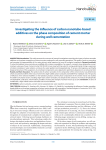
Статья научная
Introduction. This article presents the outcomes of research investigations examining the impact of carbon nanotube additives on the phase composition of cement mortars employed in well cementing operations. The quality of work on cementing and ensuring the impermeability of the casing string is quite important in terms of ecological compliance. Research methods. To solve this problem, heavy concrete was modified with a carbon nanoadditive. For research, a cement stone obtained by normalmoisture curing was chosen. Cement mortar CEM III/A32.5H was mixed with tap water for curing, preliminarily stirring a suspension of carbon nanotubes in water solution, a mixture of a water repellent and a hyperplasticizer. To ensure a homogeneous and highly dispersed structure of this suspension, its constituent components were subjected to preliminary dispersion in an ultrasonic field. Results and their discussion. The optimal ratio of carbon nanotubes in the composition of the cement mortar was determined, which amounted to 0.005% of the mass of cement for single-walled carbon nanotubes and 0.0005% for multilayer ones. The process of influence of the selected modifiers on the hydration products and the phase composition of the cement mortar was studied. An additive of complex action, including single-layer carbon nanotubes, was dispersed into solutions of a mixture of hydrophobic and hydrophilic surfactants, which made it possible to increase the strength of cement mortars up to 55%. Conclusion. In terms of modification, single-walled carbon nanotubes are the most efficient.
Бесплатно
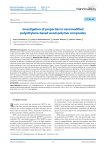
Investigation of properties in nanomodified polyethylene-based wood-polymer composites
Статья научная
Introduction. Polyethylene is by far the most widely used polymer in the production of wood-polymer composites both in Russia and in other countries. Nevertheless, these composites have a number of disadvantages: low adhesion between polymer matrix and wood filler, which reduces the strength characteristics of the products, high elasticity, and low weather resistance. In industry, such issues are often solved by using complex additives in the form of granules including binding agents, lubricants, and various thermo- and UV-stabilizers. Methods and materials. New experimental data on technological and operational characteristics of wood-polymer composites (WPC) based on low-pressure polyethylene modified with complex processing additive have been obtained. In addition to stabilizers and lubricants, multi-wall carbon nanotubes (MWCNT) were introduced in WPC to facilitate the extrusion process, their content was 30% of the total composition. WPC-based products are mainly intended for outdoor performance under mechanical load, which places special demands on them in terms of strength, weathering and water resistance. Results. An increase in the mechanical characteristics was found for WPC after the introduction of the complex additive: at a concentration of 2.6 phr, the tensile strength increased by 35%, and at 53.3 phr, the flexural strength became higher by 12%. The introduction of the additive led to a decrease in the abrasion and water absorption of the modified sample compared to that of the initial material. Regardless of the additive content, all the samples were uniformly colored, which indicated a uniform distribution of the modifier over the volume of the WPC melt during processing in the extruder. Conclusion. The introduction of a complex processing stabilizing additive into the composition of a wood-polymer composite based on polyethylene was carried out. The results of the research showed that the additive in a wide range of concentrations contributes to the improvement of the technological and operational properties of the resulting composites.
Бесплатно
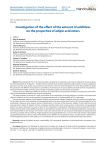
Investigation of the effect of the amount of additives on the properties of adipic acid esters
Статья научная
Polyvinylchloride (PVC) is the most frequently used polymer for obtaining a wide range of materials for various purposes. The main advantages of the polymer – excellent thermal and electrical insulation properties, high resistance to various aggressive substances, namely: acids, alkalis, various lubricants; lack of taste, smell; low water absorption (0.4–0.6%). The possibility to obtain PVC-plasticates with different characteristics is provided by the introduction of various additives, the bulk of which are plasticizers. Plasticizers based on adipic acid esters give a number of valuable properties to PVC-based compositions. However, the use of plasticizers affects the resistance of compounds to the combustion, therefore, the substances which eliminate this disadvantage are added in the polymer composition. This paper presents the results of a study of the effect of the composition of mixed plasticizers (symmetric and asymmetric adipates of aliphatic alcohols and phosphate of oxypropylated phenol) on the flammability of PVC composition. Primarily symmetric adipate of cyclic aliphatic alcohols and asymmetric adipate of aliphatic alcohols containing cycloalkyl radical have been derived. Then phosphate of oxypropylated phenol has been synthesized. Physical and chemical properties of the synthesized compounds were studied. Mixtures of plasticizers on the basis of the symmetric adipate of cyclic aliphatic alcohols and asymmetric adipate of aliphatic alcohols containing cycloalkyl radical with varying amounts of phosphate of oxypropylated phenol have been composed. The results of tests of PVC compositions containing the obtained mixtures of plasticizers for flammability are presented. Combustibility parameters of cable plasticate samples with the use of developed plasticizers correspond to state standard 5960-72 with changes 3-9. The best results were achieved with the use of asymmetrical adipate of aliphatic alcohols containing cycloalkyl radical and 4% by weight phosphate of oxypropylated phenol. It is shown that small amounts of phosphate oxypropylated phenol are able to reduce flammability, further addition of this plasticizer leads to a deterioration in performance. The developed formulations of PVC plastics are recommended for use in the production of polyvinylchloride cable sheaths.
Бесплатно
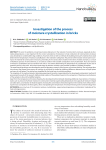
Investigation of the process of moisture crystallization in bricks
Статья научная
To solve the problems concerning moisture behaviour in the material of construction’s enclosure, especially at alternating temperatures, is very important for the correct calculations of resistance to heat conduction of construction’s enclosure and, ultimately, for comfortable living conditions. However, there are still no methods for building enclosure’s materials that could determine the temperature of moisture crystallization in the material in solid phase. The premise of the research is that water incoming to the material of construction’s enclosure, presenting in the construction’s material in the form of oxides and salts, as a result of hydrolysis process of some elements, is an eutectic solution with unstable composition and concentration. Thus, the research of moisture crystallization process transfers from micro- area (when determining the temperature of crystallization by the size of material’s pores) to the nano- area when researching the eutectic solution at the possible condition of hydrates formation. The experimental technique was developed to perform laboratory research of the process of moisture freezing. The technique takes into account that freeze-thaw process of moisture in solid body is studied at significant difference between mass of liquid phase and mass of solid phase. The method was simplified for the broad use at working conditions. The simplicity of the method aimed at obtaining experimental resultsis compensated by the developed mathematical method of processing the results of the research. Mathematical solution of the problem based on the comparison of freezing curves behaviour of the samples in dry and humidified samples. Apart from the temperature of moisture freezing, the developed method allowed obtaining additional characteristics of moisture states, such as amount of unfrozen moisture in construction’s material, supercooling temperature, heat capacity of moisture in liquid and solid states, concentration of dissolved agents. Knowing the concentration of dissolved agents in the material, even without knowing the exact composition of these agents, allows manipulating the temperature of moisture freezing at the nanotechnology level.
Бесплатно
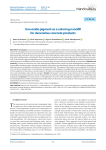
Iron oxide pigment as a coloring nanofill for decorative concrete products
Статья научная
Introduction. Current research on the performance properties of decorative concrete, when added to the concrete mixture of nano pigments are more recommendatory. In the academic literature, it is recommended to introduce pigment in the amount of about 5% of the total cement mass when creating improvement elements. The recommendations described above often demonstrate the potential for using nano pigments in terms of the influence of the amount of nano-additive applied on the uniformity of the coating texture. Characteristics such as intensity and retention time of the resulting color are also taken into account. In RF we do not have approved regulations on how to use pigments for concrete coloring. Pigments are obtained mainly from iron oxides due to their availability and low toxicity to the human body, and are promising nanomaterials in construction. Methods and materials. The study is aimed at the use of iron oxide pigment obtained from a spent iron oxide dehydrogenation catalyst as a coloring nanofiller and improving the strength characteristics of decorative concrete products. Spent iron oxide catalysts containing iron oxide particles are considered as a by-product of chemical production. The purpose of this study is to use a pigment (in the form of Fe2O3 and Fe3O4) obtained from the composition of a spent iron oxide catalyst as an additional binder and coloring nanomaterial in the composition of decorative concrete products. The effect was evaluated by testing mechanical properties such as strength, color, water absorption, water and frost resistance. Results. The research results have shown that the use of nanopigment in the technology of concrete production improves the properties of cementing composites (cement) and allows you to change the color of products. Conclusion. This study consists in the application of an iron oxide nanopigment obtained from a spent catalyst for the dehydrogenation of olefins and alkylaromatic hydrocarbons in decorative concrete products with the provision of mechanical characteristics and chromaticity of products.
Бесплатно
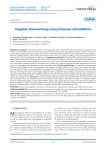
Irrigation channel lining using shotcrete with additives
Статья научная
Introduction. Shotcrete lining is the most economical and quite fully mechanized in production among all the known varieties of concrete linings. The construction practice of hydraulic structures has accumulated numerous examples of the use of a wide variety of building materials in lining – from stone to modern films made of synthetic resins. Despite the very active efforts to find more suitable materials, concrete lining will remain the main one for a long time. Accordingly, concrete lining requires further improvements, increasing durability and reducing cost. Methods and materials. The studies were carried out by the comparison method of laboratory tests of shotcrete with nanostructured surfactants additives. In the form of nanostructured additives, SCL (sulfite-cellulose liquor), NAR (neutralized air-retaining resin), cotton soap and bitumen were used in various consistency. The tests were conducted on strength properties, shrinkage, tension deformation, adhesion strength and water permeability. Structural changes in the properties were studied by electron-microscopic analysis. Results and discussion. It is established that the optimal proportion of SCL additive to the shotcrete gauged water, under the spraying condition, is 0.5% by the cement weight. NAR additive is not observed. When cotton soap additive with gauged water are added into the shotcrete, the water content in the placed shotcrete increases as the amount of the additive added increases, the optimal cement content in the shotcrete is observed when 0.3% cotton soap additive by the cement weight is added. The “rebound” decreases when the additive proportion grows. The 0.3% SCL additive by cement weight added in 1:4 dry mixture shotcrete increases its compression strength by 16%, bending strength by 1% and tension strength by 20%. Conclusion. All nanostructured surfactant additives increase the shotcrete shrinkage. The shotcrete with SCL additive shows the smallest increase in the shrinkage, and the largest – with bitumen emulsion. The additives used in shotcrete significantly increase its tension deformability, and in a wide range reduce the values of the shotcrete instantaneous elasticity modulus, i.e. enhance its plastic properties. The surfactants and bitumen emulsion reduce the adhesion strength between shotcrete and reinforcement, however, it remains at a higher level than that of conventional concretes.
Бесплатно
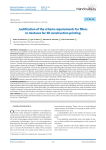
Justification of the criteria requirements for fillers in mixtures for 3D construction printing
Статья научная
Introduction. As part of the task to create new materials for additive technologies, an analysis of the situation was carried out, and a problem was identified with the lack of common approaches to selecting raw material components for mixtures. Theoretical concept. Based on the approaches of fundamental structure rheology, physicochemical mechanics of disperse systems, the theory of packing of granular media, we theoretically justified the criteria requirements for the characteristics of fillers and suggested quantitative criteria for their evaluation. It was proposed to use these quantitative criteria for a preliminary comprehensive assessment of fillers when designing compositions of mixtures for 3D construction printing. Materials and methods. The characteristics of the fillers were evaluated using scanning electron microscopy with a scanning electron microscope Thermo Scientific™ Phenom™ Desktop SEM and processing of images by the ParticleMetric software package as well as using laser granulometry with a laser analyser of particles Analysette 22. Results. We assessed the cement and 5 types of fillers that had different sizes and played different roles in the formation of the mixture properties. We also identified their estimated criterial characteristics, including the average particle diameter, gra-nulometric constant, and particle shape coefficient. Boundary values of these characteristics were determined for particles of different morphology and dispersion degree. Conclusion. Based on the application of the suggested theoretical approaches, we determined the lines of research associated with obtaining experimental patterns of the impact of the criterial characteristics of fillers on the rheological characteristics of mixtures as well as with these characteristics according to their significance and justifying the requirements for the range of quantities of fillers depending on their size, shape, and granulometry.
Бесплатно
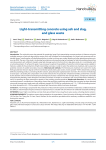
Light-transmitting concrete using ash and slag, and glass waste
Статья научная
Introduction. The article discusses the potential for producing “green” light-transmitting concrete products in Vietnam using the available resources of ash and slag and glass waste, which will contribute to the development of a closed-cycle economy and sustainable “green” transformation of industrial production in order to achieve zero carbon dioxide and other greenhouse gases emissions by 2050. The aim of the study is to develop formulations and manufacturing technologies for light-transmitting cement-free concrete products with sufficient strength using high-tonnage waste in the form of ash, slag, glass waste, etc. in combination with an activating solution. To achieve this goal, it was necessary to explore the possibility of using the multi-tonnage waste available in Vietnam, suitable for the production of light-transmitting concretes, in order to select the optimal raw materials, and to assess the potential volumes of suitable secondary resources. Materials and methods. The following raw materials were used in the study: finely ground blast furnace slag, fly ash from incineration power plants, glass waste, ceramic powder “TOTO”, obtained by crushing defective plumbing products, activating alkaline solution, polycarboxylate superplasticizer and water. The research methodology is based upon calculating the compositions of concrete mixtures for the production of light-transmitting cement-free concretes by the absolute volume method and testing the developed concretes to determine their average density, compressive and tensile strength during bending, water absorption and natural moisture of samples in accordance with current Vietnamese standards, as well as in assessing the light transmission capacity of the resulting concrete products. Results and discussion. As a result of the conducted research, compositions of decorative cement-free and light-conducting optical fiber-free concretes has been obtained using multi-tonnage man-made waste with sufficient strength (40÷50 MPa for compression and 11.5÷13 MPa for bending tension), low water absorption (6.5÷10% by weight) and good light transmission ability have been developed. Conclusion. A technology is proposed for the production of decorative thin panels and wall tiles in laboratory conditions that have the ability to transmit light and give architectural expressiveness to outside walls and interiors of residential and public buildings.
Бесплатно
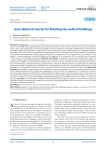
Lime-diatomic mortar for finishing the walls of buildings
Статья научная
Introduction. At present, when performing finishing and restoration work, more and more preference is given to dry lime mixes (DBM). Wide opportunities for the production of dry lime-cement mixes are opened up by the use of diatomite, which is both a dry mix filler and an active mineral additive. Previous studies have confirmed the effectiveness of heat treatment of diatomite. After firing at 600–800оC, activity increases when interacting with calcium oxide hydrate. This is explained by the fact that at 600–800оC clay substances are dehydrated to metakaolinite, which is characterized by increased reactivity. The properties of dry mixtures and compositions based on them are affected by the particle size of the components of the dry mixture. In this regard, it is of great importance to study the influence of the dispersion of the components of the dry mixture on the formation of the structure of the finishing compositions. Materials and methods. To study the active centers of the diatomite surface, we used the indicator method for determining the distribution of adsorption centers. Determination of the compressive strength was carried out on a DOSM-3-1 dynamometer on samples 3x3x3 cm in size at the age of 28 days of air-dry hardening of the compositions. The determination of the granulometric composition of the components of the dry mixture was carried out by the method of sedimentation analysis. Adsorption was estimated from the optical density measured with a PEC photoelectrocalorimeter. To study adsorption at the “liquid-solid” interface, the initial components of the dry mixture, lime and diatomite, were used. Results and discussions. Accordingto the data obtained, it was found that a particle size reduction of the dry mixture filler leads to an increase in the strength characteristics of lime-diatomite compositions.It was found that the introduction of C-3 additive into the water favorsincreasing dispersion of hydrated lime, improving plasticity finishing mixture and improving the physical and mechanical characteristics lime-diatomaceous compositions.It is proposed to introduce sulfate additiveinto the formulation of the aluminumdry mixture. Increase in the compressive strength of the finishing composition with addition of aluminum sulfate 1.5–2 times was observed. Conclusion. It has been determined that the developed dry mixture is highly competitive, in terms of technological and operational properties,withprototype. Moreover, the production of the proposed DBM is more economical due to the use of local raw materials and domestic additives.
Бесплатно
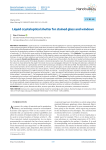
Liquid crystaloptical shutter for stained glass and windows
Статья научная
Introduction. Liquid crystal as a nanomaterial has found application in science, engineering and technologies. The unique physical properties of liquid crystals make them sensitive to external influences. The article presents the results of an experimental study of the flexoelectric effect in a liquid crystal, when shear deformations occur, thin layers of which can serve as an optical shutter for the stained glass windows of buildings. Materials and methods. Nematic liquid crystals with a homeotropic orientation of molecules 10÷100 μm thick were used by the birefringence method. Shear frequency 1 kHz. Methods. The experimental cell was assembled from two glass plates in the form of a flat capacitor, spacers were placed between the glasses, which set the sample thickness. A source of shear vibrations was located on the side of the microscope stage, which was connected to the LC cell using a thin waveguide. Results and discussion. According to the geometry of the problem, the director is headed vertically parallel to the Z axis, the velocity vector of the plate vibrations is horizontal along the X axis. The orientation of the liquid crystal molecules in the volume is characterized by the angle θ. An elastic-viscous wave propagates between the moving and stationary substrates of the LC cell, which leads to a perturbation of the initial homeotropic orientation of the director field. The dependences of the first and second harmonics of the shear-induced EMF, as well as the optical signal, on the plate oscillation speed are obtained. They have a threshold nature of occurrence at a critical speed υc~8 mm/s, while the liquid crystal molecules are oriented at an angle θс. The temperature dependences of EMF harmonics far from the nematic – isotropic liquid phase transition showed that when approaching the phase transition, the regression of the signal U1ω stops, and then its value increases up to the temperature transition of the nematic – isotropic state TNI. The magnitude of the optical signal I2ω/Io(T), approaching the phase transition, increases, which is explained by the increase in the amplitude of the director oscillation Θd. Conclusion. The article considers the flexoelectric effect observed in thin layers of nematic liquid crystals with homeotropic orientation of molecules placed between two glass plates. The occurrence of the effect has a threshold character, the critical strain rate is about 8 mm/s. The conditions and parameters of the effect (shear amplitude, sample temperature) on a condenser cell for various liquid crystals are considered. It is proposed to use the results obtained to create an optical shutter (shutter) for stained glass windows or windows of buildings and structures.
Бесплатно

